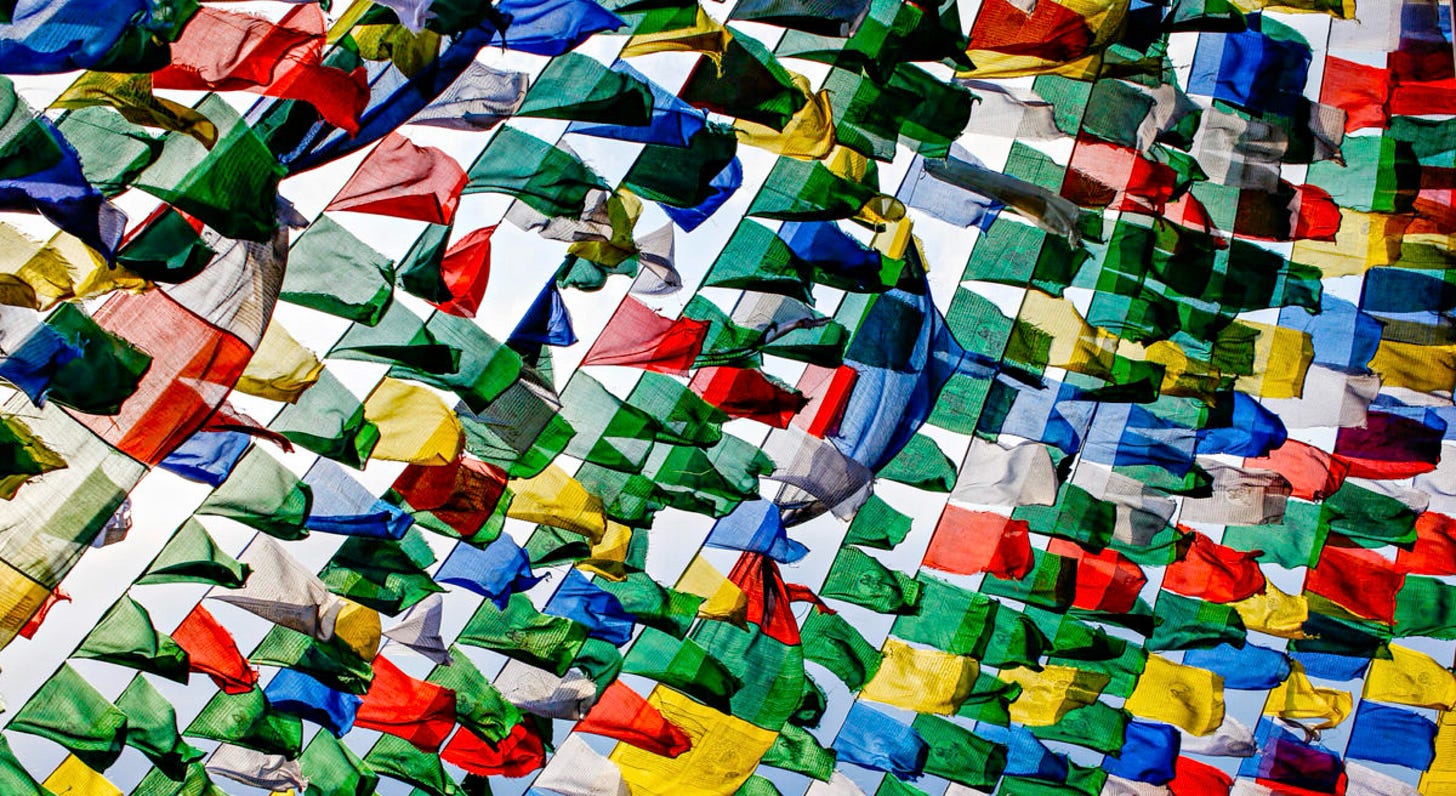Rocky Mountain Prayer Flags
A religious diaspora is welcome on tribal lands in Montana
One of the benefits of living in the Pacific Northwest is the widespread presence of Asian culture. And, by this I do not just mean Japanese, Thai, Vietnamese, Fujin, Indian, Chinese, and Mongolian food, etc., though I do truly miss having easy access to a steaming bowl of phô. Which you cannot get here in Helena.
I also mean Asian architectures, gardens, holidays, and — a particular favorite for me — the flourishing presence of Tibetan prayer flags, strung above hundreds, if not thousands, of Portland and Seattle doorways. Colorful signs of blessing, good fortune, and solidarity with 1.2 million people killed and forced into exile, when the Chinese government invaded and conquered Tibet in 1950.

When I was a ten year old school boy in Billings, I wandered, for the very first of many, many, times, into a used bookstore named Barjon’s. It was full of literary novels, anthropology, science fiction, and comic books. Sitting behind an old wooden desk by the door was a man named John. There was a chair next to his desk, where he invited me to sit and chat with him, many times.
John became, for me, the quintessential “bookstore guy,” with thick glasses and a woolly beard to match his woolly cableknit sweaters. He had done his military service during World War II in Burma, China, and India. He was willing to talk to a ten year old kid, and loved talking about books and a whole lot more.
I began visiting John every week or so. This was the mid-1970’s, and my mother expected me to keep myself “out of her hair” until dinner. So, my after-school hours were filled by books and wandering. Computer screens thankfully did not yet exist, to suck my life out through my eyes. Instead, in 1979, John introduced me, and a whole group of us, to Dungeons & Dragons, a sign of very old school nerd-cred which I wear proudly to this day.
On occasion, John and I would get to talking about God. I have always been curious about the nature of reality, and so was he. He nurtured this. He helped me see there were ways to think of “God” beyond Sunday masses and regular confessions to the priests of the Roman Catholic church. He died when I was fourteen, creating my first opportunity to attend a funeral alone. Which is where I met his wife, who offered a whole new adventure for my mind. It is through these two that I first came to know the Dharma.
There are two dollies for whom I will cry, when they die: Parton and the Lama.
About one percent of Americans identify themselves as Buddhist.1 This number includes most of the roughly 26,500 Americans of Tibetan ancestry, who live here because America has traditionally welcomed religious refugees.2
Gochen Tulku Sang-Ngak Rinpoche, and his younger brother Namchak Khenpo Ngawang Gelek Rinpoche, lived their early years in a Chinese prison camp, before escaping over the Himalayas. Over twenty years ago, the Confederated Salish and Kootenai Tribes specifically welcomed this family, and its ancient Nyingma Buddhist lineage, to build a “garden of one thousand Buddhas” on tribal land near Arlee, Montana.

This small but thriving center for Tibetan Buddhist cultural and religious practice has offered the tribe, and the Americans living nearby, a peaceful place of study and devotion ever since. It is just one of many gifts the Native peoples living in Montana have quietly given to their American hosts.
America’s religious demographics.
The Tibetan religious diaspora.
https://www.migrationpolicy.org/article/global-nomads-emergence-tibetan-diaspora-part-i


